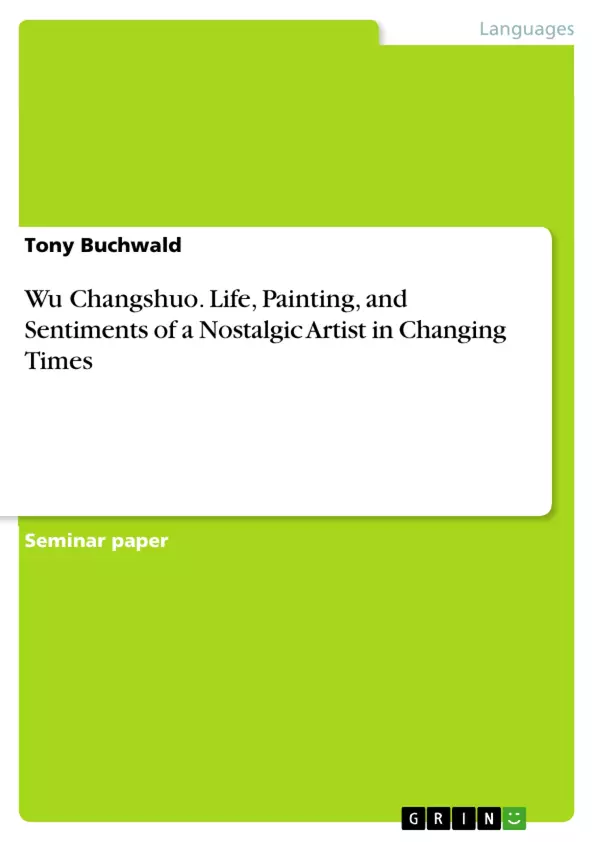Being established as one of the most influential artists of the Shanghai School, Wu Changshuo’s life and work have been investigated on several accounts, each adding more to the picture of the highly unorthodox painter, whose focus on self-expression stood above all other aesthetical issues. The aim of this study is therefore not to try and add more details to his story, but to introduce Wu Changshuo specifically as a painter – though his painting was least appreciated by himself – and to show that underneath the quite modern style typical of the Shanghai School there was still an orthodox painter, clinging to literati ideals of long gone dynasties. I will also show thatthe actual Wu Changshuo – the painter and the person – can be seen in his landscapes rather than in his multitudinous paintings of flowers and fruits.
Inhaltsverzeichnis (Table of Contents)
- Introduction
- Biography
- Painting
Zielsetzung und Themenschwerpunkte (Objectives and Key Themes)
This study aims to introduce Wu Changshuo as a painter, highlighting his traditional influences within the modern Shanghai School. It explores the artist's life and how his experiences shaped his artistic expression, particularly in landscape painting.
- Wu Changshuo's life and artistic development within the context of changing times
- The influence of traditional literati ideals on Wu Changshuo's art
- Wu Changshuo's artistic preferences and ranking of his different art forms
- The relationship between Wu Changshuo's personal experiences and his artistic expression in landscape painting
- Wu Changshuo's artistic legacy and influence on contemporary art
Zusammenfassung der Kapitel (Chapter Summaries)
- Introduction: This chapter introduces Wu Changshuo as a painter and outlines the study's objectives. It emphasizes the artist's focus on self-expression and his connection to traditional literati ideals, despite his association with the modern Shanghai School.
- Biography: This chapter provides a brief summary of Wu Changshuo's life, highlighting key events and influences that shaped his artistic development. It discusses his early education, experiences with the Taiping Rebellion, and interactions with other prominent figures in the art world.
- Painting: This chapter focuses on Wu Changshuo's artistic practices, particularly his approach to painting. It explores his preferences for different genres, the importance of his personal experiences in his artwork, and the role of his paintings in shaping his legacy.
Schlüsselwörter (Keywords)
This study focuses on the life, work, and artistic expressions of Wu Changshuo, a renowned Chinese artist associated with the Shanghai School. Key terms and concepts include: Chinese painting, Shanghai School, literati ideals, landscape painting, self-expression, artistic development, traditional influences, and artistic legacy.
- Citar trabajo
- Tony Buchwald (Autor), 2013, Wu Changshuo. Life, Painting, and Sentiments of a Nostalgic Artist in Changing Times, Múnich, GRIN Verlag, https://www.grin.com/document/274526



